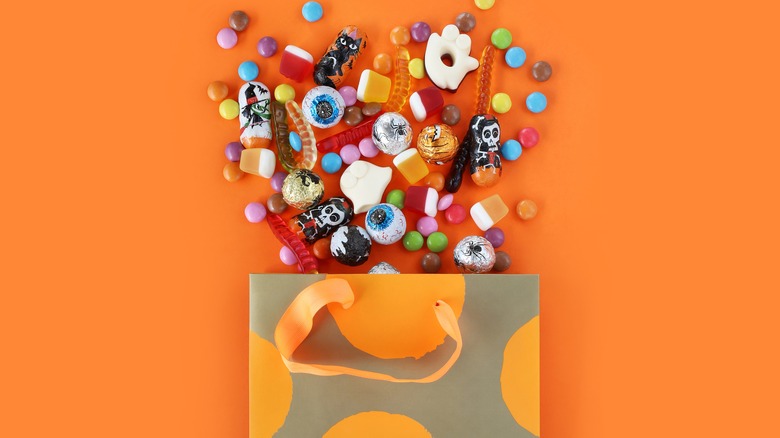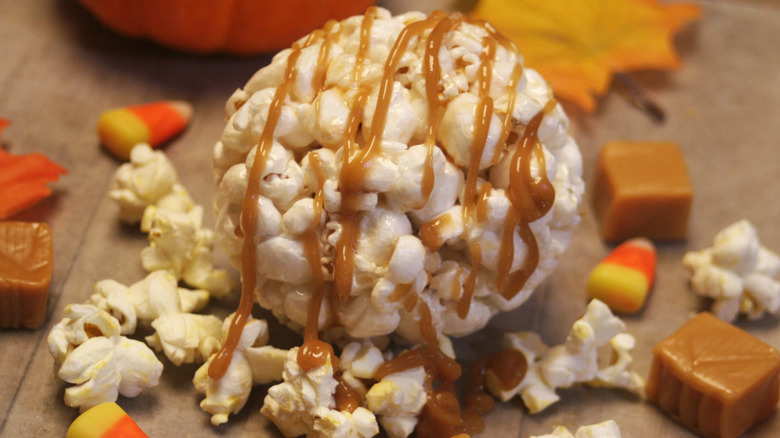The 1950s Halloween Treat That's Still Scrumptious Today
If there's one thing kids of today and those of the past have in common, it's the love of Halloween. Now in 2022, just like back in 1952, children don costumes of ghosts and witches, excited to go trick-or-treating. While the idea of getting free candy remains appealing, the types of candy being dumped into Halloween pails has changed over the years.
According to MeTV, the Halloween candies of the 1950s were a combination of familiar and somewhat unconventional treats. One could expect to get Milky Way bars and Dubble-Bubble gum at one house, while another house may give out tiny boxes of Post-brand cereal and Schrafft's treats (a now-defunct manufacturer of chocolate). The 1950s also introduced candies that would soon become popular Halloween staples such as Pixy-Stix (via Candy Favorites) and peanut M&M's (via M&M's). So long as it was sugary and had the word "candy" on it, kids of the 50s were happy to have it in their bags.
While some treats have faded in popularity, others have withstood the test of time and remain Halloween staples. There is one snack that isn't made of chocolate, caramel, or powdered sugar — instead, it's made entirely out of popcorn and remains a very unique shape.
Popcorn balls are still common Halloween snacks
Popcorn balls are just as the title implies; balls made of popcorn held together by light molasses. According to PARADE, popcorn balls were a popular sight at Halloween parties in the 1950s — and for good reason. Who wouldn't enjoy taking a bite out of a literal ball of kettle corn? But where does the popcorn ball come from?
According to folklore (via What's Cooking, America), the origin of this treat can be traced back to Nebraska in the late 1800s. As the story goes, that particular time in Nebraska was "The Time of the Striped Weather," in which the weather was both simultaneously hot and rainy. It was during this weather period that, on a certain hillside farm, the intense heat caused the corn kernels to "pop" off stalks while the rain washed out the sugar in the sugar cane. The popped corn and sticky syrup rolled down the hill together, eventually forming enormous, hundred-foot-high popcorn balls that were conveniently eaten by grasshoppers, erasing any trace of their existence. But the idea of the "popcorn ball" remained.
The earliest known recipe for popcorn balls comes from a cookbook published in 1861 by E.F. Haskell (via David's Vintage Recipes). The recipe calls for popcorn, butter, and molasses, similar to most recipes. If you're now jonesing for one of these treats, try out this old-fashioned popcorn ball recipe.

